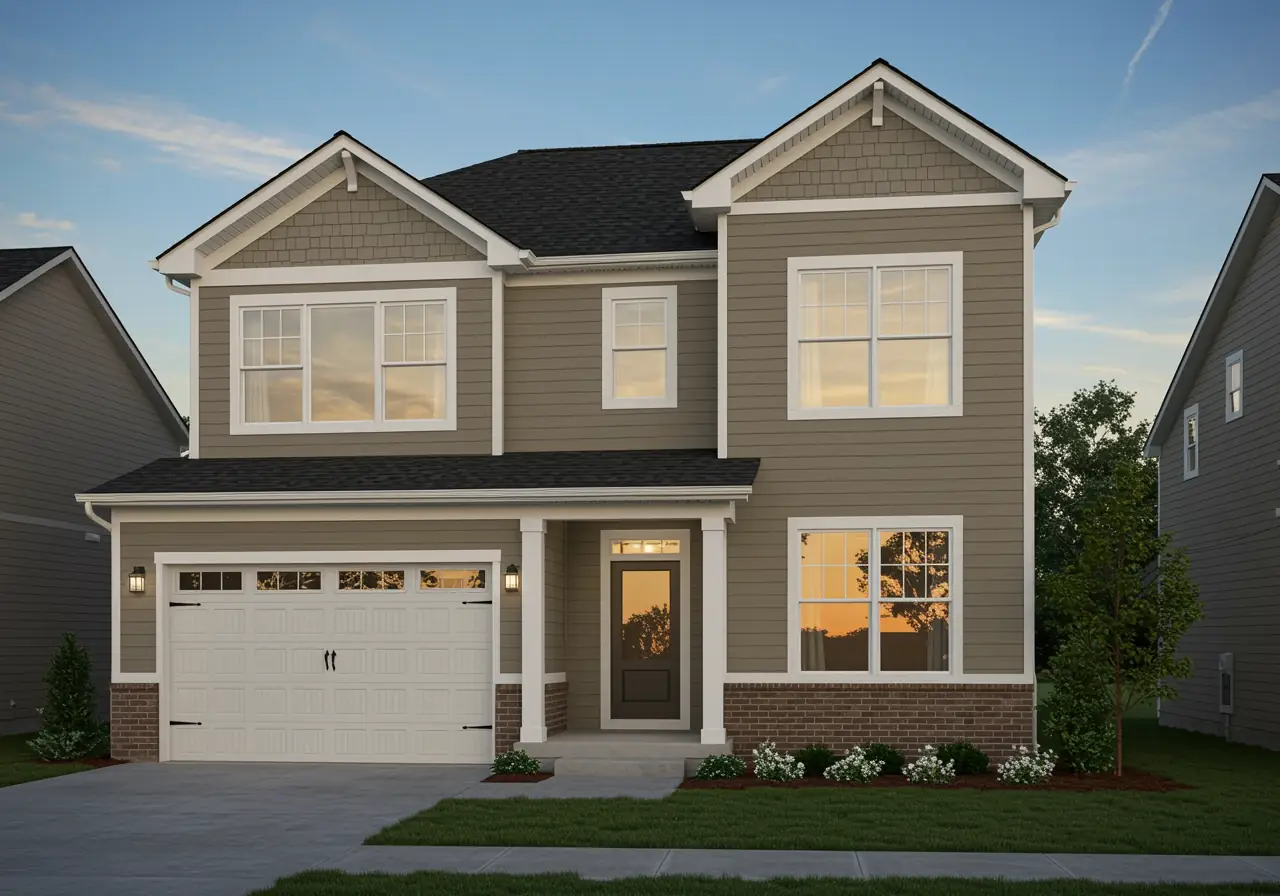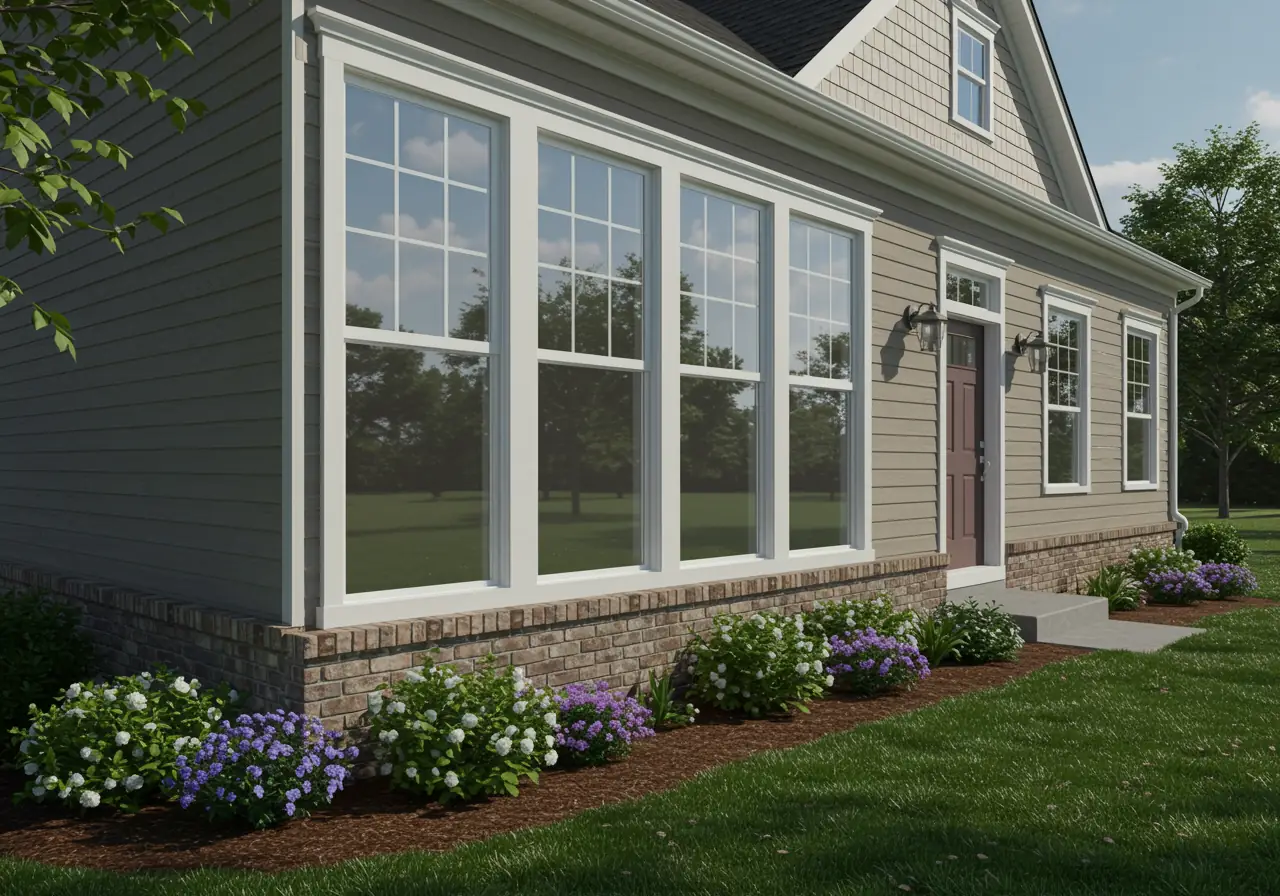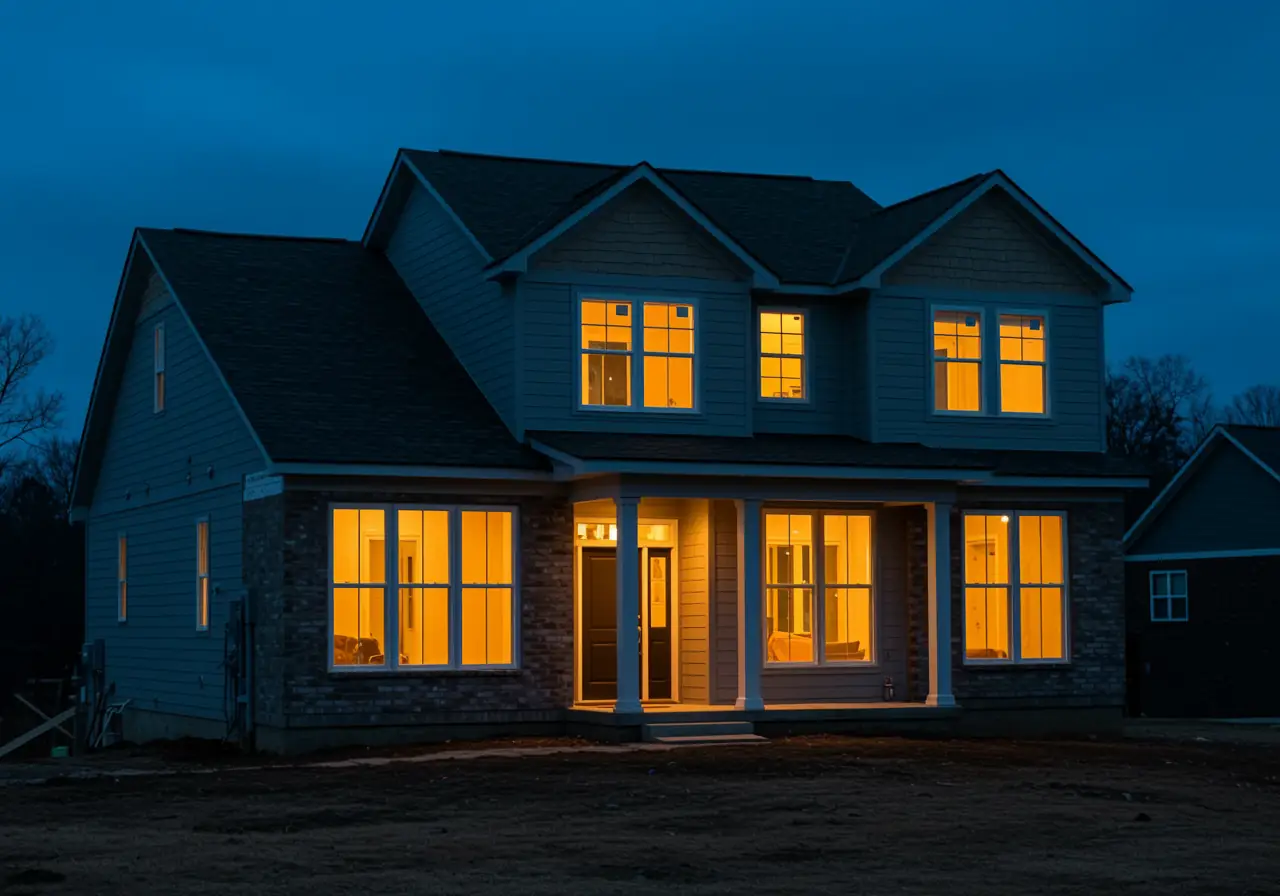Window Efficiency Guide Virginia
Contents
Did you know that understanding window ratings in Virginia can help you create a more energy-efficient, comfortable home all year long? The right energy-efficient windows do more than improve appearance - they directly impact how much heat stays inside during winter and how much sunlight and warmth enter during summer. Learning how to read window energy ratings empowers Virginia homeowners to choose windows that reduce energy loss, improve indoor comfort, and support long-term performance.
The U-Factor measures how well a window prevents heat from escaping - lower values mean better insulation, ideal for colder Virginia months. The Solar Heat Gain Coefficient (SHGC) shows how much solar energy passes through the glass, helping control unwanted heat during humid summers. Together with Visible Transmittance (VT) and Air Leakage (AL), these values define overall window efficiency.
Modern Low-E glass windows in Virginia combine multiple panes, gas fills, and advanced coatings to achieve the perfect balance of insulation, sunlight control, and energy savings - helping homeowners maintain comfort and efficiency across the state’s mixed climate.

Understanding the Core Window Ratings
Mastering window ratings requires understanding five key metrics that determine your windows' performance. Each rating serves a specific purpose in measuring energy efficiency, comfort, and long-term value for your Virginia home.

What is U-Factor and why it matters
Window U-Factor measures how effectively your window prevents heat from escaping your home. Consider this your window's insulation score--the lower the U-Factor, the better the window retains heat. Most windows have U-Factor ratings between 0.20 and 1.20. For Virginia homes, selecting windows with a U-Factor of 0.30 or below is ideal, especially in northern regions of the state.
This rating directly impacts your energy bills since heat loss through windows accounts for significant energy waste. Windows with higher U-Factors force your HVAC system to work harder, particularly during Virginia's cold winter months when maintaining indoor warmth becomes expensive.
SHGC windows meaning and ideal values
Solar Heat Gain Coefficient (SHGC) indicates how much solar radiation passes through your window. The SHGC rating, ranging from 0 to 1, is crucial for understanding a window's energy performance. For example, a window with an SHGC of 0.40 allows 40% of available solar heat to enter your home. For Virginia's mixed climate, aim for SHGC ratings under 0.40 to balance winter warmth with summer cooling.
Generally, windows with higher SHGC ratings also have higher U-Factors, so you'll need to consider this relationship when making selections. This connection means finding the sweet spot between beneficial winter solar gain and unwanted summer heat becomes crucial for year-round comfort.

Visible Transmittance and daylight control
Visible Transmittance (VT) measures the amount of natural light passing through windows, rated from 0 to 1. The higher the VT, the more daylight enters your space. A window with 0.6 VT allows 60% of sunlight in, while 0.2 VT permits only 20%.
Balancing natural light with energy efficiency requires careful consideration. Higher VT often means higher solar heat gain, potentially creating uncomfortable glare in south-facing rooms. South-facing windows benefit from moderate VT ratings that provide adequate daylight without excessive heat buildup during Virginia's hot summers.
Air Leakage and energy loss
Air Leakage (AL) measures how much air passes through a window assembly. Rated on a scale of 0.1-0.3, with lower numbers indicating less infiltration, this often-overlooked rating significantly impacts your home's comfort. Air leakage accounts for 25-40% of energy used for heating and cooling in typical homes.
Quality vinyl windows typically outperform wood, fiberglass, and composite options in preventing air leakage. Consequently, even windows with excellent U-Factor and SHGC ratings underperform if air leakage ratings are poor. Proper sealing becomes essential for maintaining the energy efficiency you're paying for.
Low-E glass windows Virginia: pros and cons
Low-E (low-emissivity) glass features ultra-thin, transparent coatings that regulate solar radiation. For Virginia homes, these Low-E coatings deliver measurable advantages:
- Blocks up to 70% of heat from passing through windows
- Reduces UV damage by 75%, protecting furniture and flooring
- Creates approximately $1.30 billion in annual residential savings nationwide
The primary limitation involves slightly reduced visible light transmittance. Low-E coatings require careful balancing with your home's daylight needs and orientation--particularly important for rooms where natural light significantly impacts daily activities or mood.
Upgrade your Virginia home with energy-efficient windows from My Modern Renovations. Get expert installation, lower energy bills, and lasting comfort. Schedule your free estimate today.
How Window Ratings Work Together
Window ratings create an interconnected system--each number influences the others in ways that directly impact your Virginia home's comfort and energy efficiency. Understanding these relationships helps you make smarter choices for the state's variable climate.

Balancing U-Factor and SHGC
The relationship between U-Factor and SHGC requires careful consideration based on your home's location. Virginia's mixed climate demands finding the right balance, particularly since higher SHGC values typically come with higher U-Factors, creating a challenge when selecting optimal windows.
Northern Virginia homes should prioritize a low U-Factor (0.30 or below) to minimize heat loss during winter months. South-facing windows in warmer parts of the state need both a low U-Factor and low SHGC (around 0.27-0.30) to prevent unwanted heat gain. This dual requirement makes window selection more complex than simply choosing the lowest available numbers.
Trade-offs between VT and SHGC
Visible light transmittance and solar heat gain present a classic balancing act. Traditional windows allowed more light but also more heat--newer technologies offer better solutions. Key considerations include:
- High VT brings natural light but potentially increases cooling needs
- Low-E coatings reduce SHGC without significantly sacrificing VT
- The Light-to-Solar Gain ratio (LSG) measures this balance--higher numbers indicate better efficiency
East and west-facing windows deserve special attention since they receive intense morning and afternoon sun. These exposures require windows that maintain a favorable ratio between daylight and heat gain to prevent uncomfortable glare while preserving natural illumination.

How ratings affect HVAC sizing and performance
Your window selections substantially impact heating and cooling system performance. Energy-efficient windows with appropriate ratings can reduce cooling loads by up to 30% in warm climates and decrease overall HVAC system demand.
Properly rated windows create a more stable interior environment by reducing temperature fluctuations. This stability means your HVAC system doesn't work as hard to maintain comfort. Consequently, many homeowners can install smaller, less expensive HVAC systems when upgrading to high-performance windows.
Selecting windows with ratings optimized for Virginia's climate creates a more comfortable home while potentially reducing both equipment and operating costs for your heating and cooling systems.
Boost your home’s comfort and cut energy costs with high-performance windows from My Modern Renovations. Our experts install windows with the perfect U-Factor, SHGC, and Low-E balance for Virginia’s climate - keeping your home cool in summer, warm in winter, and efficient year-round. Book your free estimate today.
Applying Ratings to Virginia Homes
Virginia's unique climate demands specific window performance ratings to maximize both comfort and energy efficiency in your home.
Window ratings Virginia climate zone guide
Virginia falls primarily in Climate Zone 4, with some northern counties in Zone 5. This classification dictates specific window requirements to comply with building codes and energy efficiency standards. Your location within Virginia determines which window ratings will perform best throughout seasonal changes from humid summers to cold winter months.
Best window ratings for homes in Virginia
Virginia homes should target windows that meet ENERGY STAR certification criteria for optimal energy efficiency. These windows must undergo energy performance testing by the National Fenestration Rating Council (NFRC). Fixed windows should have a U-factor of 0.38 or lower, while operable windows need a U-factor of 0.45 or less--though aiming for 0.30 or below delivers even better performance.
Solar heat gain coefficient Virginia climate
Virginia's mixed climate requires windows with an SHGC of 0.40 or below. This requirement helps manage summer heat gain while still allowing beneficial warmth during winter months. Northern Virginia falls in the North-Central Zone, where the SHGC should not exceed 0.35 for skylights--a stricter standard that reflects the region's heating and cooling demands.

U-Factor windows Virginia recommendations
Maximum energy efficiency in Virginia homes requires windows with U-factor ratings of 0.30 or less. Vinyl and fiberglass frames excel in Virginia's climate fluctuations, withstanding tropical thunderstorms and strong winds that characterize the region. These framing materials deliver superior insulation compared to alternatives, making them particularly well-suited for Virginia's variable weather patterns.
Making Smart Window Replacement Decisions
Reading window labels correctly becomes your foundation for smart purchasing decisions. The National Fenestration Rating Council (NFRC) label displays five key ratings that determine window performance. Beyond understanding U-factor and SHGC, pay attention to Visible Transmittance, Air Leakage, and Condensation Resistance values that impact comfort and energy efficiency.
How to read window ratings effectively
Locating the NFRC label on each window provides your starting point--this standardized label enables reliable comparisons between products. Target lower U-factor values, ideally 0.30 or below for Virginia homes. SHGC ratings should remain at 0.40 or less for optimal performance in Virginia's climate.
Choosing energy efficient windows for Virginia homes
Vinyl and fiberglass frames excel in Virginia's variable weather conditions, offering superior resistance to tropical thunderstorms and strong winds. Windows with double or triple panes, Low-E coatings, and gas fills between layers deliver maximum efficiency. These glazing types and features can reduce your energy bills by approximately 12-13% annually.

Home window replacement Virginia: what to expect
Replacement windows in Northern Virginia typically cost around $25,000 for ten windows, yet provide 64-66% return on investment. Professional installation ensures proper sealing and insulation between the window frame and rough opening.
Working with ENERGY STAR certified installers
Certified installers deliver precision installation that prevents moisture issues and maintains warranty coverage. Even high-quality windows underperform when installed incorrectly. Proper installation is crucial for maximizing energy performance characteristics. Ask potential contractors about their certification credentials and manufacturer partnerships before making your final decision - or skip the guesswork and trust My Modern Renovations. Our certified experts ensure every window replacement meets ENERGY STAR standards, delivering lasting performance, warranty protection, and superior craftsmanship.
Make your window replacement in Virginia easy and efficient with My Modern Renovations. Our team installs ENERGY STAR certified, Low-E, and double-pane windows for superior comfort and energy savings. Get expert installation that seals out drafts, enhances durability, and boosts your home’s value. Request your free estimate today.
Conclusion
Understanding window ratings in Virginia is one of the smartest steps homeowners can take to improve comfort, energy efficiency, and long-term home value. Each rating - U-Factor, SHGC, Visible Transmittance (VT), and Air Leakage (AL) - plays a critical role in how windows perform throughout Virginia’s mixed climate. Selecting windows with a U-Factor of 0.30 or lower and an SHGC of 0.40 or below helps balance insulation and solar control, keeping homes warmer in winter and cooler in summer.
Choosing energy-efficient windows in Virginia made from durable vinyl or fiberglass ensures resistance to heat, humidity, and severe weather. These materials, combined with Low-E glass coatings, minimize heat transfer, block harmful UV rays, and support HVAC efficiency.
By understanding these window performance ratings, Virginia homeowners can make confident decisions that lead to lower energy bills, greater year-round comfort, and lasting durability. Smart window replacement in Virginia is more than an upgrade - it’s an investment in efficiency, protection, and comfort that pays off for many years.
Ready to make your home more efficient, comfortable, and protected? Trust My Modern Renovations for expert window replacement in Virginia. Our certified team installs high-performance, energy-efficient windows built for the state’s unique climate - reducing energy loss, enhancing comfort, and boosting home value. Schedule your free estimate today and experience the difference quality craftsmanship makes.
Key Takeaways
Understanding window ratings is essential for Virginia homeowners to maximize energy efficiency, comfort, and home value while navigating the state's mixed climate conditions.
• Target specific ratings for Virginia: Choose windows with U-Factor of 0.30 or below and SHGC under 0.40 to optimize performance in Virginia's mixed climate zone.
• Window ratings work together: Balance U-Factor, SHGC, and Visible Transmittance ratings rather than focusing on individual metrics for optimal energy efficiency.
• Quality materials matter: Select vinyl or fiberglass frames for superior durability against Virginia's variable weather, including storms and temperature fluctuations.
• Professional installation is crucial: Work with ENERGY STAR certified installers to ensure proper installation and maintain warranty coverage for maximum performance.
• Expect strong ROI: While replacement windows cost around $25,000 for ten windows in Northern Virginia, they typically provide 64-66% return on investment.
Energy-efficient windows can reduce your annual energy bills by 12-13% while creating a more stable interior environment and reducing HVAC system stress. The investment in properly rated windows pays dividends through lower operating costs, enhanced comfort, and increased home value for years to come.
FAQs
Q1. What is considered a good U-factor for windows in Virginia? A U-factor of 0.30 or below is considered good for windows in Virginia. Lower U-factor values indicate better insulation properties, which is crucial for maintaining energy efficiency in the state's mixed climate.
Q2. How does the Solar Heat Gain Coefficient (SHGC) affect window performance in Virginia? In Virginia, windows with an SHGC of 0.40 or below are recommended. This SHGC rating helps manage summer heat gain while still allowing beneficial warmth during winter months, optimizing energy efficiency throughout the year.
Q3. What are the benefits of Low-E glass windows for Virginia homes? Low-E glass windows can block up to 70% of heat from passing through, reduce UV damage by 75%, and contribute to significant energy savings. They are particularly beneficial in Virginia's variable climate for maintaining indoor comfort and protecting furnishings.
Q4. How do window ratings impact HVAC system performance? Energy-efficient windows with appropriate ratings can reduce cooling loads by up to 30% in warm climates. This leads to a more stable interior environment, reduced HVAC system stress, and potentially allows for the installation of smaller, less expensive HVAC systems.
Q5. What should homeowners expect when replacing windows in Virginia? Window replacement in Virginia typically costs around $25,000 for ten windows. However, this investment usually provides a 64-66% return when selling the home. Additionally, homeowners can expect reduced energy bills, improved comfort, and better protection against the state's variable weather conditions.

4 steps to get your house safe
Book your Consultation
Removal & Preparation
Professional Installation
Post-Care & Warranty
Licensed & Insured
Turn Key Solution
Low Interest Financing







